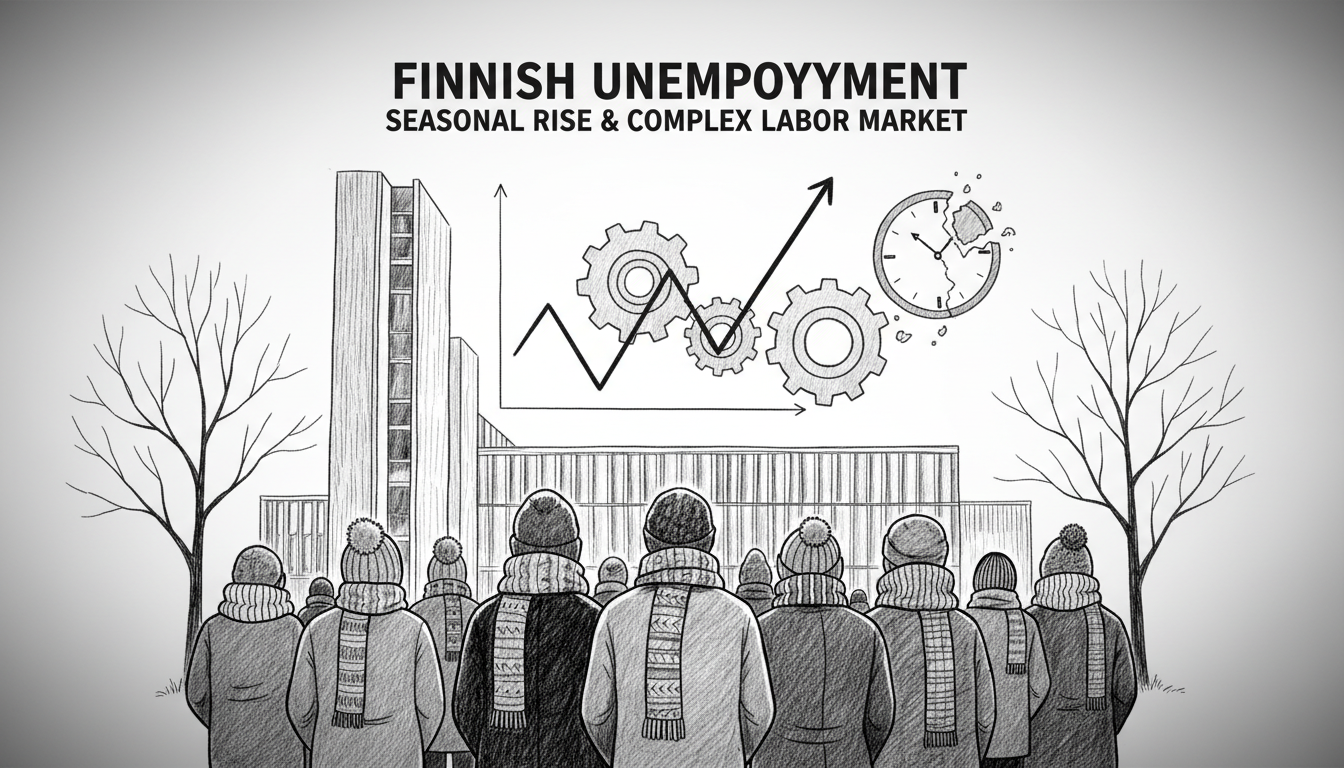Finland's unemployment funds report a slight increase in joblessness during October, with the YTK Unemployment Fund recording a 5.7 percent unemployment rate among its members. This represents a 0.2 percentage point increase from September's 5.5 percent figure. The development follows predictable seasonal patterns that typically see unemployment rise gradually through late autumn and winter months.
YTK Managing Director Auli Hänninen confirmed the seasonal trend in an official statement. She noted that unemployment rates typically experience moderate increases during the latter part of the year, with current projections suggesting continued growth through February and March. Despite this seasonal uptick, current unemployment levels remain substantially lower than the previous year's October rate of 6.5 percent.
Several factors contribute to the changing unemployment landscape, including broader economic conditions and recent legislative amendments to earnings-related security. The unemployment rate calculation specifically reflects paid earnings-related daily allowances, with recent legal changes reducing the payment of these benefits. This technical adjustment partially explains the statistical improvement in unemployment figures.
October brought gender parity in unemployment rates, with both men and women recording identical 5.7 percent figures. This represents a notable shift from earlier in autumn when women's unemployment exceeded men's rates. Current forecasts suggest divergent paths ahead, with male unemployment expected to rise toward approximately 7 percent during winter months while female unemployment remains stable.
Hänninen attributes the projected male unemployment increase to seasonal industries like construction that typically slow during winter months. She emphasizes this represents an annual recurring pattern rather than a fundamental economic shift. The construction sector's seasonal fluctuations regularly impact male employment statistics more significantly due to workforce composition.
Statistics Finland released complementary labor market data showing simultaneous growth in both employment and unemployment figures. The statistical agency reported 25,000 more employed persons aged 15-74 compared to the previous year, alongside 48,000 additional unemployed individuals within the same age bracket. This paradoxical situation reflects complex labor market dynamics.
The employment rate trend for 20-64 year olds stood at 76.0 percent, while the unemployment rate trend for 15-74 year olds reached 10.3 percent. These official statistics provide a broader picture than unemployment fund data alone, capturing different segments of the labor market through varied methodological approaches.
Chief Economist Jukka Appelqvist of the Central Chamber of Commerce described Finland's labor market as experiencing an unusual and complex situation. He noted that immigration and policy measures aimed at increasing job supply have boosted employment numbers despite weak labor demand due to economic conditions. This creates the apparent contradiction of rising employment alongside growing unemployment.
Appelqvist's analysis highlights a concerning trend beneath the surface statistics. Long-term unemployment continues its harsh upward trajectory, with 132,600 people registered as unemployed for over one year through employment services. This figure represents the highest long-term unemployment level recorded this century, indicating structural challenges beyond seasonal fluctuations.
The economist acknowledges the difficulty in interpreting Finland's current labor market signals. Policy measures appear successful in generating the positive employment development they targeted, yet economic cycles simultaneously reveal their harsh impact through weakened labor demand. This creates competing narratives about the health of Finland's job market.
Government officials in Helsinki face complex policy decisions amid these mixed signals. The Parliament must balance short-term economic support measures with longer-term structural reforms. European Union employment guidelines and funding programs also influence national policy directions, creating a multi-layered governance challenge.
Political parties across the spectrum interpret these labor market statistics differently. Coalition partners emphasize the employment growth as evidence of successful economic policies, while opposition voices focus on rising unemployment and record long-term joblessness. This political debate reflects genuine complexity in the economic data rather than simple partisan interpretation.
The situation presents particular challenges for international businesses and expatriates considering Finnish operations. While overall employment growth suggests economic vitality, the rising unemployment rates indicate potential consumer market weaknesses. This mixed picture requires careful analysis of specific sectors rather than broad generalizations about the Finnish economy.
What emerges clearly is that Finland's labor market defies simple characterization. The country experiences genuine employment growth alongside troubling unemployment increases, creating policy challenges that resist straightforward solutions. This complexity may become increasingly common across Nordic economies facing similar demographic and globalization pressures.

